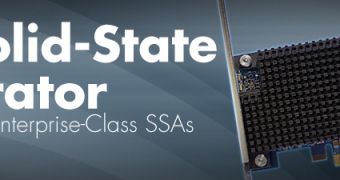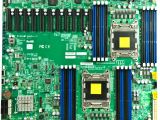American server company Supermicro has recently combined its Intel Xeon-powered servers with some powerful PCIe SSD cards from STEC and the result is truly amazing.
Santa Ana headquartered, Californian company STEC uses its own controllers to power its new PCIe Solid-State Accelerator (SSA) cards that are basically SSD drives with a PCI-Express interface, just like OCZ’s RevoDrive.
STEC’s SSA cards come with 240 GB of SLC NAND and have a x4 PCIe connector that’s PCI-Express 2.0 compatible.
The sustained read throughput is rated at an amazing 1.4 GB/s while the write capability sits at 1.1 GB/s.
This is almost the maximum you can get through a PCIe Gen2 x4 interface.
STEC also has an MLC NAND-based SSA card that has a sustained read throughput is rated at the same amazing 1.4 GB/s while the write capability sits quite a bit lower at “just” 0.6 GB/s.
Supermicro’s 6047R-TXR workstation reportedly uses an X9DRX+-F motherboard with no less than ten PCIe Gen3.0 x8 slots.
Considering STEC’s SSA steady state random performance of 100,000 IOPS for both of the cards, it’s easy to understand how that 1 million IOPS was achieved.
STEC’s SSA cards also come with the company’s proprietary NAND management techniques and power-loss protections along with NAND level redundancy.
This means that if one NAND flash chip on the card fails, the rest of the card will continue to function properly.
In standard HDD implementations, such a high level of IOPS can only be achieved by using thousands of HDDs in a very complex and voluminous server, but Supermicro’s 6047R-TXR workstation will manage the same feat while using only a fraction of the energy.

 14 DAY TRIAL //
14 DAY TRIAL // 
